Nvidia among investors in xAI’s $20 bln capital raise- Bloomberg
Introduction & Market Context
FACC AG (VIE:FACC) presented its first quarter 2025 results on April 30, showing a 14.1% year-over-year revenue increase amid a recovering aviation market, though profitability metrics declined compared to the same period last year. The aerospace supplier continues to navigate a complex market environment characterized by rebounding aircraft deliveries and persistent supply chain challenges.
The broader commercial aviation market showed mixed performance in early 2025, with total aircraft deliveries reaching 266 units in Q1, an 18.2% increase from the previous year. This growth was driven primarily by Boeing (NYSE:BA)’s strong recovery with a 56.6% increase in deliveries, while Airbus experienced a slight 4.2% decline.
As shown in the following chart detailing aircraft deliveries and order backlogs:
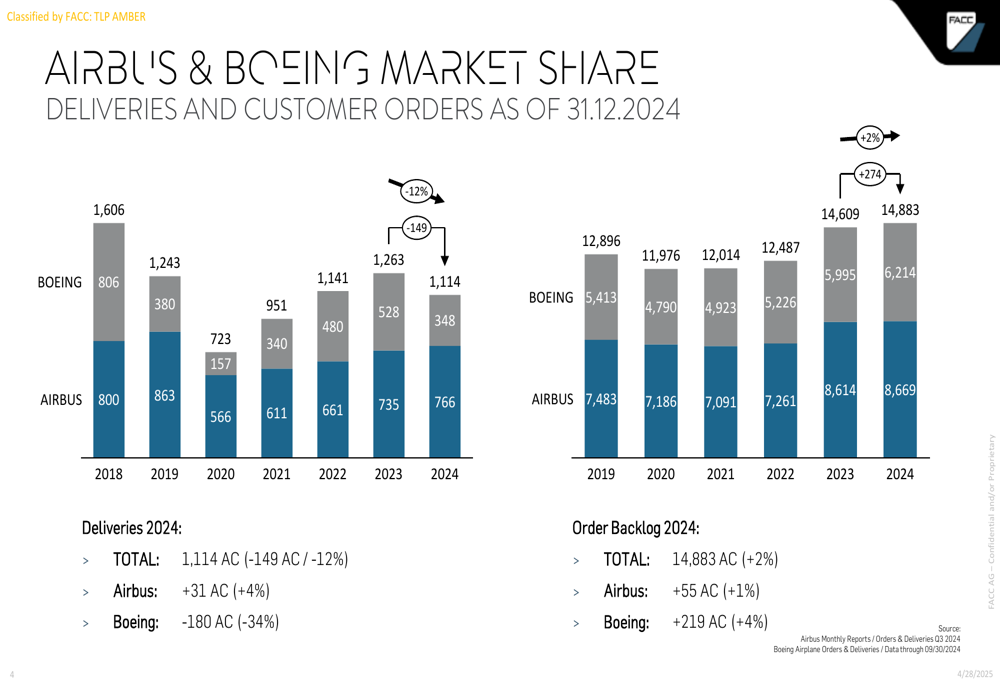
The total order backlog for Airbus and Boeing increased by 2% to 14,883 aircraft by the end of 2024, providing FACC with a substantial pipeline of future business. Boeing’s order backlog grew by 4%, while Airbus saw a more modest 1% increase.
Quarterly Performance Highlights
FACC reported revenue of €231.0 million for Q1 2025, up 14.1% from €202.4 million in Q1 2024. However, operating EBIT declined to €4.3 million (1.9% margin), compared to €9.9 million in the same period last year. The company highlighted several achievements, including being named a finalist for the JEC Composites Innovation Awards 2025 and receiving the Aero Excellence Award in bronze.
The company’s overall financial performance shows continued revenue growth but with pressure on profitability, as illustrated in this multi-year comparison:
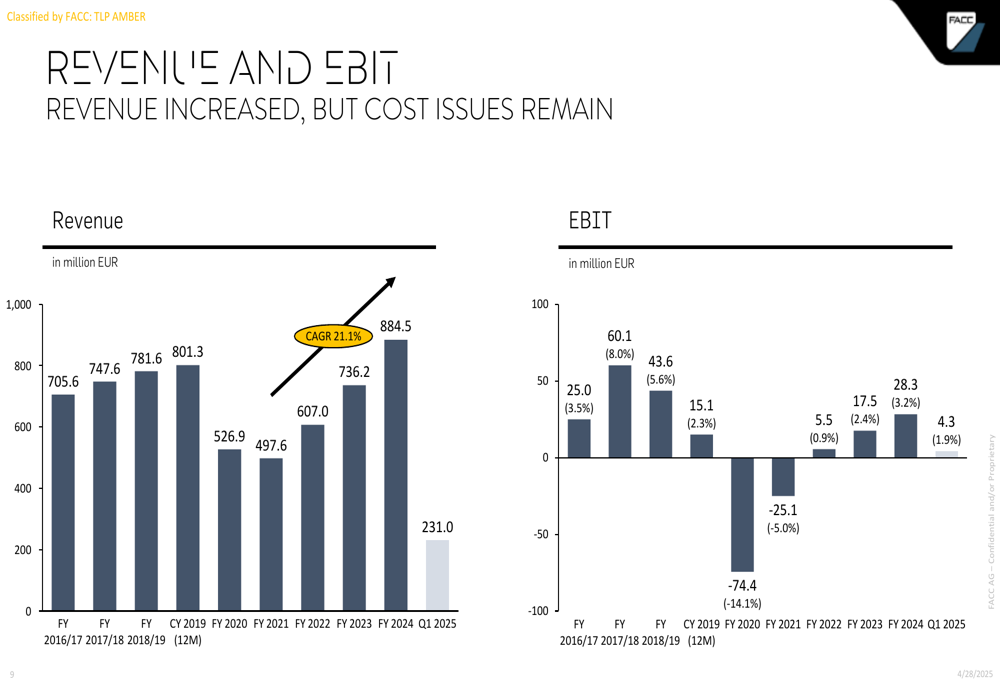
Free cash flow improved significantly to positive €3.5 million in Q1 2025, compared to negative €37.3 million in Q1 2024. This improvement came despite ongoing high inventory levels, which reached €184.6 million at the end of the quarter. The company added 46 employees during the period to support production ramp-up activities.
The following waterfall chart details the components of FACC’s free cash flow:
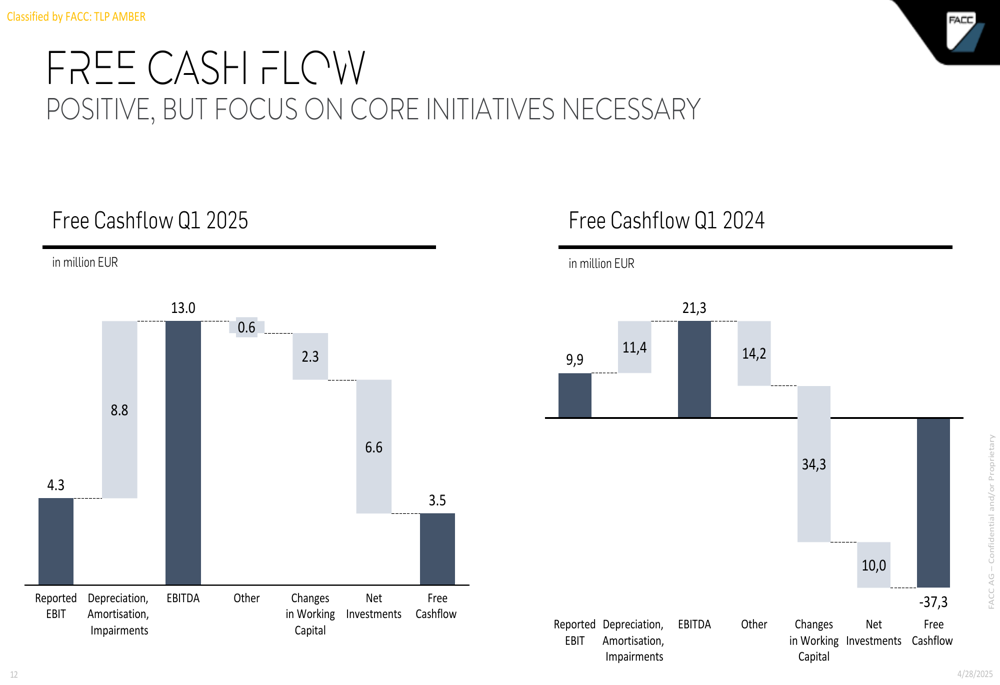
Divisional Performance Analysis
All three of FACC’s business divisions reported revenue growth in Q1 2025, though with varying profitability outcomes. The Engines & Nacelles division was the standout performer, achieving both revenue growth and improved profitability.
The revenue development across divisions shows consistent growth patterns:
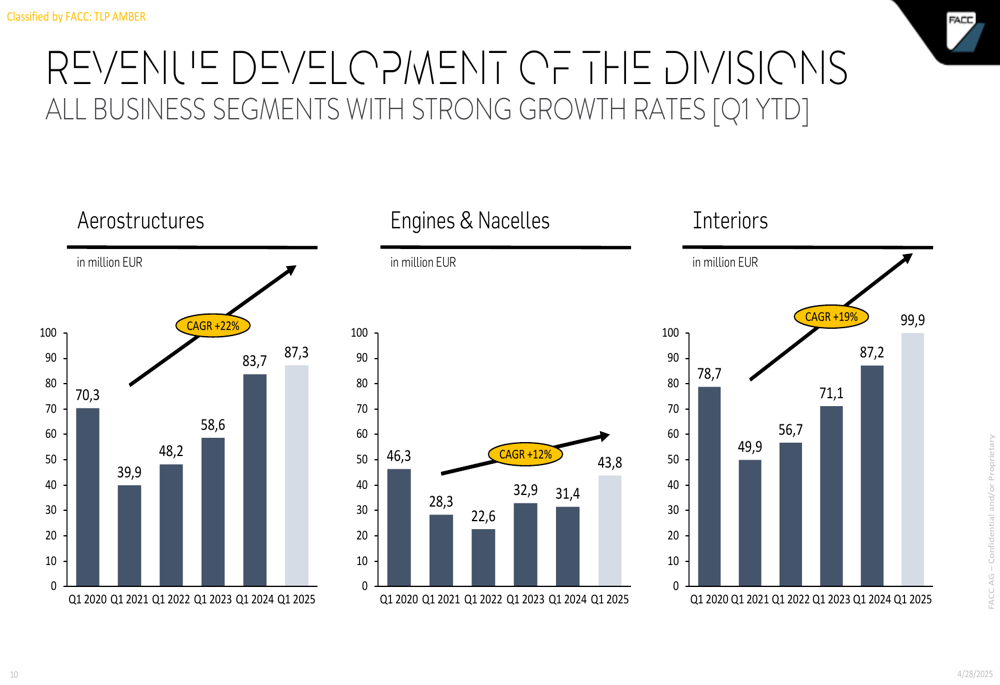
However, EBIT performance varied significantly across divisions. The Engines & Nacelles segment delivered €6.3 million in EBIT, up from €3.8 million in Q1 2024. The Aerostructures division reported €1.5 million in EBIT, down from €6.7 million in the prior year. Most concerning was the continued underperformance of the Cabin Interior segment, which reported an EBIT loss of €3.5 million, deteriorating from a €0.6 million loss in Q1 2024.
The following chart illustrates these divisional EBIT trends:
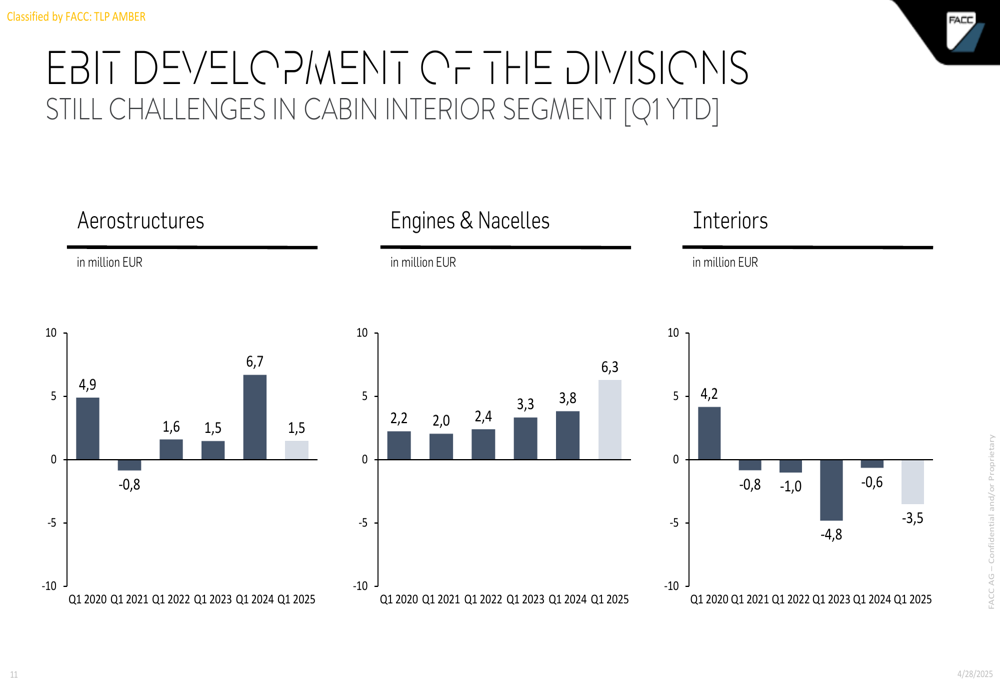
CEO Robert Machtlinger, whose contract was recently extended for five years, emphasized the company’s focus on operational efficiency while managing the ongoing production ramp-up. The persistent challenges in the Cabin Interior segment remain a key area of concern, with the company continuing its strategy of relocating projects to its Croatian facilities to improve cost structures.
Market Outlook and Strategic Positioning
FACC’s presentation highlighted strong long-term market fundamentals, with a forecast of 42,430 new aircraft needed between 2024 and 2043. This demand is split between growth (23,970 aircraft) and replacement of existing fleets (18,460 aircraft).
The company also detailed expected production rate increases from major aircraft manufacturers, positioning FACC for potential long-term growth:
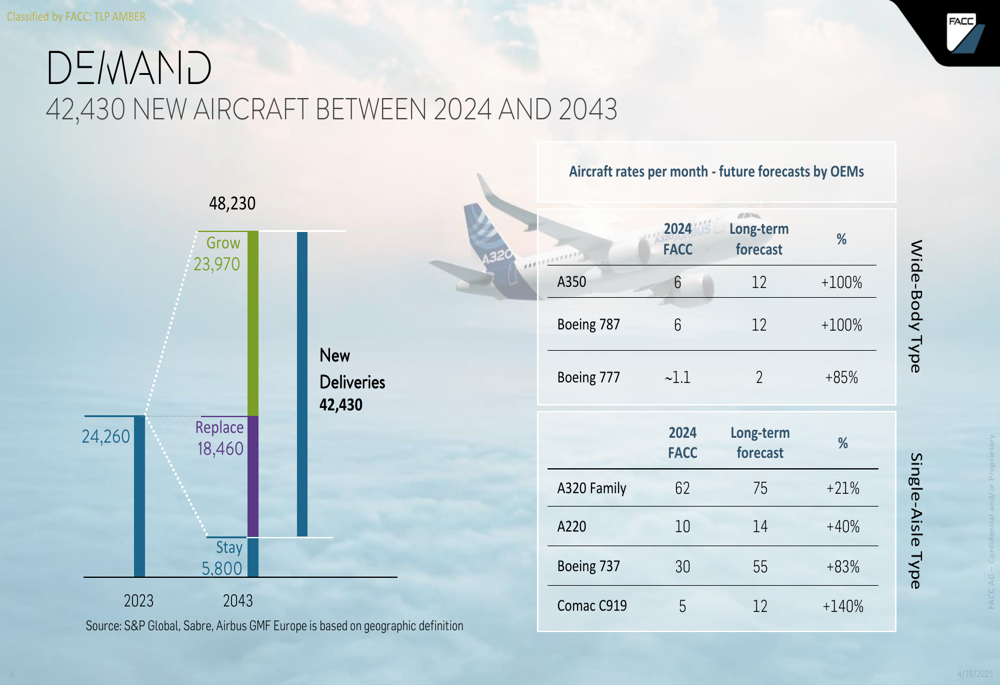
These forecasted production increases range from 21% for the A320 family to 140% for the Comac C919, with most programs expected to see production rates double in the coming years. This positive outlook supports FACC’s continued investments despite near-term margin pressures.
However, the company also highlighted emerging challenges related to global trade tensions. FACC noted that while short-term impacts from tariffs are largely the responsibility of customers under existing contracts, the company is closely monitoring potential mid- and long-term implications:
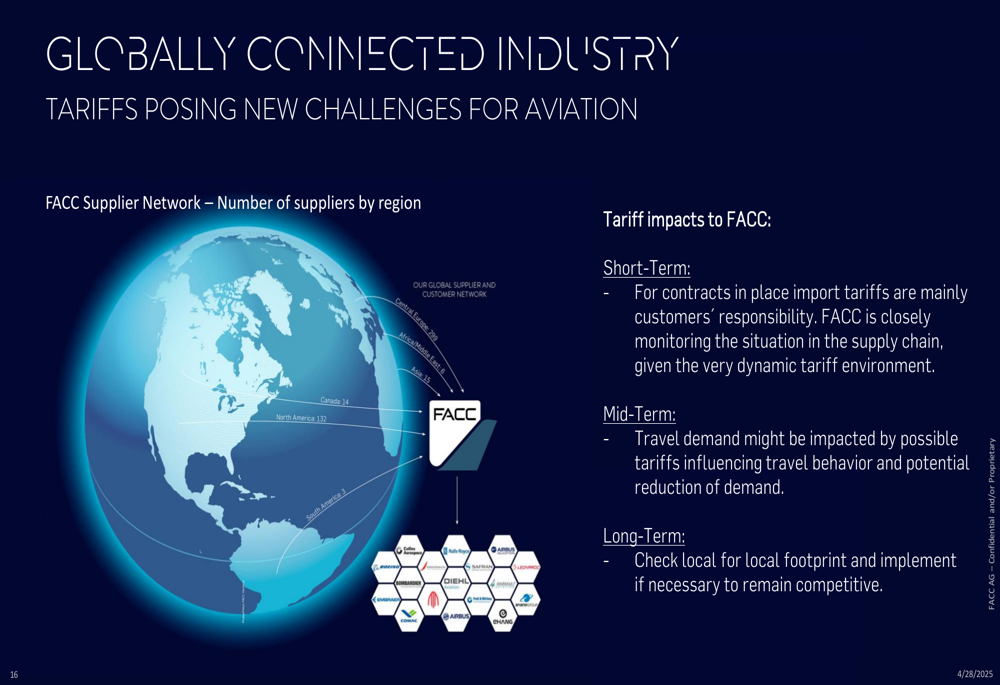
Forward-Looking Statements
For fiscal year 2025, FACC projects revenue growth of 5-15%, driven by continued recovery in the aviation industry and increasing build rates for short- and medium-haul aircraft. The company expects stable construction rates for wide-body aircraft.
Key strategic priorities for 2025 include:
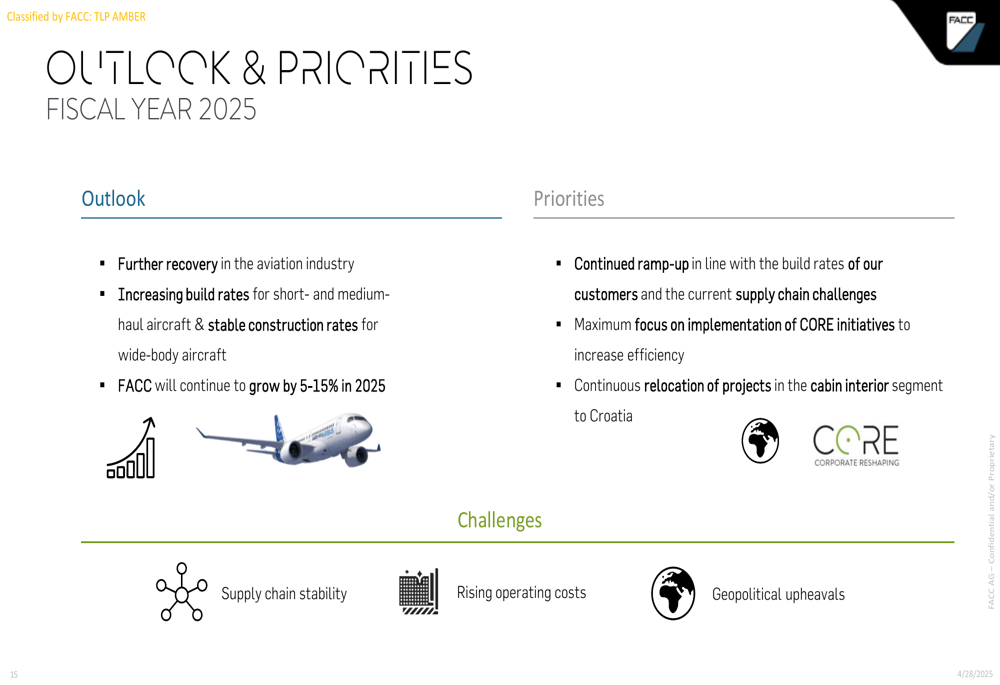
Management emphasized three core initiatives: continuing the production ramp-up in line with customer build rates, maximizing focus on efficiency improvement through the company’s "CORE" initiatives, and accelerating the relocation of cabin interior projects to Croatia to address the segment’s persistent profitability challenges.
While FACC’s revenue growth demonstrates the ongoing recovery in commercial aviation, the declining EBIT margin highlights the challenges of managing costs during a production ramp-up phase. The company’s ability to improve profitability, particularly in the struggling Cabin Interior segment, will be crucial for achieving its long-term financial targets as the aviation market continues its recovery trajectory.
Full presentation:
This article was generated with the support of AI and reviewed by an editor. For more information see our T&C.
